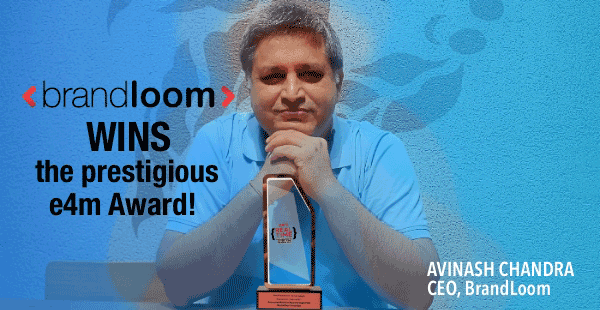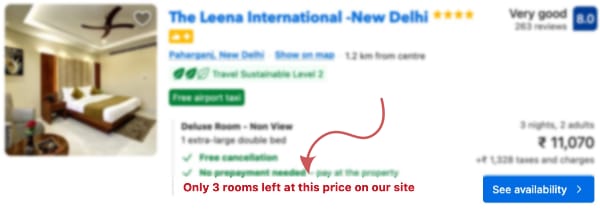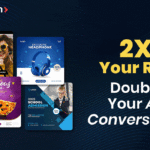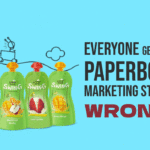Hey there,
In Today’s Email:
🏆 We Won. Again. : Put A dollar In & Take Out 18 More! (ROAS 18.6)
🔥 People Regularly Pay Me For This Information – But You Can Have it FREE
🛒 Millions of Dollars Earned. : Can You Afford To Ignore These Strategies?
📊 Why Your Organic Traffic Is Plunging & How You Can Fix It.

🏆 We Won. Again. : Put A dollar In & Take Out 18 More. (ROAS 18.6)
Hey everyone, we have some exciting news to share with you all! 🎉
We won the “Best-Paid Marketing Campaign Award” at the e4m RealTime Awards 2023, which was held on 24th August 2023 in Mumbai.
Our team was extremely proud and honored to receive the award for achieving an ROAS (Return on Ad Spend) of 18.6 for a bootstrapped D2C brand.
Most D2C brands receive a ROAS of 5-6, however our paid marketing team achieved an ROAS that’s 3x times the average industry standard!
We’re ecstatic – and this achievement inspires us as a team to bring out the best to the table to build successful and sustainable brands of every size and shape.
I am so excited to see if we can replicate these results for each of our valued clients.
-> Need Paid Marketing On Steroids? Let’s Talk.
https://www.brandloom.com/advertising
🔥 People Regularly Pay Me For This Information – But You Can Have it FREE :
The 4 New P’s of Modern Digital Marketing.
For decades, the 4Ps of marketing – Product, Price, Place, and Promotion – have been the cornerstone of marketing strategies. Not anymore.
In fact, over the years, I have used this new version of the 4Ps of marketing in several of my projects and have seen amazing results.
That’s because the digital age and shifting consumer behaviors demand a new approach.
Let’s explore a fresh perspective on each P, complete with real-world examples and actionable insights:
1. PURPOSE Instead of Product:
It’s time to shift our focus from merely showcasing products to highlighting a brand’s purpose and impact. For instance, Patagonia stands out as a trailblazer. By championing environmental causes and creating durable products, they’ve cultivated a passionate community that resonates with their purpose.
What does research say:
According to a 2020 Cone/Porter Novelli study, 66% of consumers would switch from a product they typically buy to a new product from a “purpose-driven” company.
Takeaway:
Embrace a purpose-driven narrative that engages and empowers your audience, fostering loyalty beyond transactions.
2. VALUE Beyond Price:
Price wars are passé. The emphasis now lies on creating value that transcends mere monetary figures. For example, Apple exemplifies this by crafting premium experiences that justify higher prices. From sleek designs to seamless user interfaces, they’ve redefined value in the tech world.
What does research say:
According to a Nielsen report, 59% of consumers prefer to buy products from brands familiar to them. Strong branding often implies a level of quality and service, which is a value beyond just price.
Takeaway:
Invest in value-additions that enhance the customer’s experience, creating a willingness to pay for exceptional benefits.
3. EXPERIENCE Over Place:
In today’s digital landscape, “Place” extends far beyond physical locations. For instance, Airbnb reimagined this concept by transforming spaces into experiences. They curate stays that offer a glimpse into local life, providing unique memories that hotels can’t replicate.
What does research say:
A PwC study found that 73% of people admit customer experience is an essential factor in their purchasing decisions. Yet only 49% of consumers say companies provide a good customer experience.
Takeaway:
Craft immersive online and offline experiences that build emotional connections with customers, irrespective of physical boundaries.
4. CONNECTION Over Promotion:
Traditional promotions are intrusive; modern consumers seek authentic connections. For example, Glossier thrives on user-generated content and word-of-mouth. Their customers feel like part of a community, driving growth through genuine interactions.
What does research say:
According to Motista’s research, “Emotionally connected customers have a 306% higher lifetime value (LTV), stay with a brand for an average of 5.1 years vs. 3.4 years, and will recommend brands at a much higher rate (71% vs. 45%).”
Takeaway:
Foster a sense of community and loyalty through meaningful engagement, allowing customers to become brand advocates.
-> Let’s Build The Strategy to 3X Your Revenues In The Next 6 Months. Ready?
www.brandloom.com
Fun Fact About Us
82% of BrandLoom clients see an uptick of at least 20% in their revenue after the implementation of BrandLoom’s strategies.
🛒 Millions of Dollars Earned : Can You Afford To Ignore These Strategies?

How many times have you seen flash sales with countdown timers on Amazon and Myntra? We’re all guilty of purchasing that striped tee because it was going on 40% off just for two days- and you’d have to be a fool to miss that opportunity.
Limited-time offers and countdown timers can increase conversion rates by 8%-9%, provided you use them correctly.
Urgency scarcity marketing campaigns tap into the fear of missing out (FOMO) phenomenon.
Here are 3 Brands that use FOMO like a master:
1. Booking.com
When you’re browsing accommodation options on Booking.com, you’ve likely come across messages like “Only 1 room left” or “Last booked 15 minutes ago” These subtle nudges instill a feeling of urgency and scarcity.
Takeaway:
You can encourage users to make quicker decisions by triggering a fear of missing out. Whether it’s limited-time offers, low stock indications, or time-sensitive discounts, FOMO can catalyze conversions.
2. OnePlus
OnePlus is renowned for its “Flash Sales,” a limited-time offering where a specific number of products are made available at a discounted price. What makes OnePlus stand out is its innovative approach to these sales. Rather than simply offering discounts, OnePlus generates excitement by creating a virtual queue for customers to access the deals.
Takeaway:
OnePlus understands that human psychology is deeply influenced by the fear of missing out (FOMO) and the desire to own something unique. By blending these psychological triggers with a carefully orchestrated scarcity tactic, they successfully convert interest into action. 💡
3. Basecamp
Basecamp is a project management and team collaboration software that has masterfully leveraged urgency and scarcity in its marketing strategy.
For instance, Basecamp periodically offers time-limited promotions where customers can access additional features or discounts for a limited period. They might also run a promotion stating, “Upgrade to the premium plan within the next 72 hours and get 30% off.”
Takeaway:
They encourage users to act immediately by setting time or availability limits. This strategy can be applied to various businesses, driving conversions and engagement by creating a sense of exclusivity and immediacy.
Remember that Maintaining transparency and delivering on promises is essential to build customer trust.
-> Let’s Multiply Your Revenue Today. Ready?
https://www.brandloom.com/strategic-branding/consultants
Why Your Organic Traffic Is Plunging & How You Can Fix It.
Thinking Outside the Box: 3 Unconventional SEO Concepts for Remarkable Results.
According to Google, E-A-T (Expertise, Authoritativeness, and Trustworthiness) plays a very important role in the realm of SEO.
Moreover, content from an authoritative source has a better chance of ranking high than those that don’t.
Google has further stressed the importance of Experience as an integral part of SEO, making ranking harder. Therefore, Now Google expects you to demonstrate that you adhere to EEAT.
Nevertheless, I have experimented and tried a couple of SEO practices that have achieved amazing results.
Here are my top 3 highly recommended SEO concepts that you should try out immediately:
1. Understand CONTENT BLOCKS:
Understanding Content Blocks is a crucial aspect of modern SEO. Rather than focusing solely on keyword phrases, search engines now analyze web pages based on topics and subtopics. This approach, known as a topic taxonomy, helps search engines comprehend the organization and relevance of content.
For instance, when creating a webpage, it is beneficial to start by identifying the main topic, followed by a list of relevant subtopics. Let’s take the example of a webpage about “How to improve organic traffic.”
Topic: How to improve organic traffic.
Subtopics:
a. Keyword Research and Optimization
b. On-Page Optimization
c. High-Quality Content Creation
d. Link Building
e. User Experience Optimization
f. Social Media Promotion
g. Local SEO.
By structuring content in this way, search engines can better understand the webpage’s topic and its related subtopics. This approach helps search engines and makes the content more accessible and understandable for readers.
Takeaway:
Structuring your content using topic and subtopic organization helps search engines understand the context and relevance of your webpage, leading to improved visibility and user experience.
2. FEATURED IMAGES
Featured images are crucial in enhancing SEO and user experience on websites. These visually appealing images are often displayed alongside content snippets in search results and social media shares, grabbing users’ attention and increasing click-through rates.
Example:
Imagine you’re searching for a recipe online. A search result with an enticing featured image of the final dish is more likely to capture your interest than a text-only result. This simple addition can significantly improve user engagement and drive more organic traffic.
Takeaway:
Incorporating relevant and eye-catching featured images can boost your content’s visibility, making it stand out in search results. Remember to use descriptive file names and alt text to compress images for faster page loading when optimizing images.
3. Comprehensive Is Not Always ON TOPIC:
In the realm of SEO, the notion of “comprehensive content” often leads to a misconception that covering every possible aspect of a topic is the key to success. However, it’s essential to remember that being comprehensive doesn’t necessarily equate to being on topic. A prime example is creating an extensive guide on “Healthy Breakfast Recipes” that includes a detailed section on workout routines – unrelated to the central theme.
Example:
Imagine a blog post titled “Top Travel Destinations” that unexpectedly delves into pet care tips. While informative, this off-topic addition can confuse readers and dilute search engine rankings.
Takeaway:
Balancing comprehensiveness with relevance is vital. Google prioritizes content that aligns closely with user intent. Focusing on a specific topic helps establish authority and provides a seamless user experience. 🎯
-> Start Ranking On The #1 Page Of Google In 10 Weeks Or Less. Let’s talk
https://www.brandloom.com/seo-services
That’s it for today, thanks for reading.
Yours Sincerely,

Avinash Chandra
Founder,BrandLoom
☎︎ +91-7669647020
✉️ care@brandloom.com
💻 – https://team.brandloom.com/book-a-meeting
Note: If you want to discuss strategy, just hit reply on this mail.



